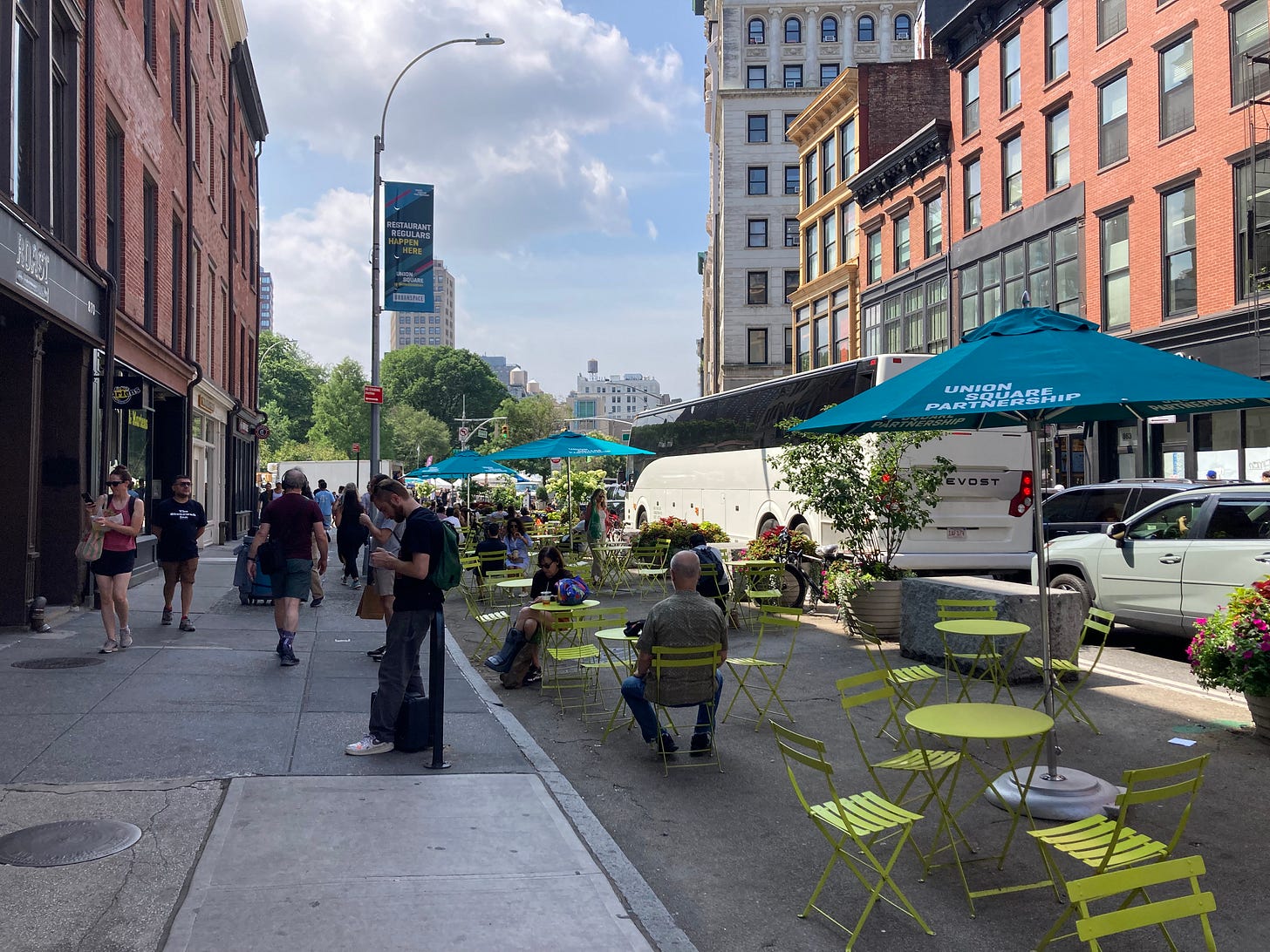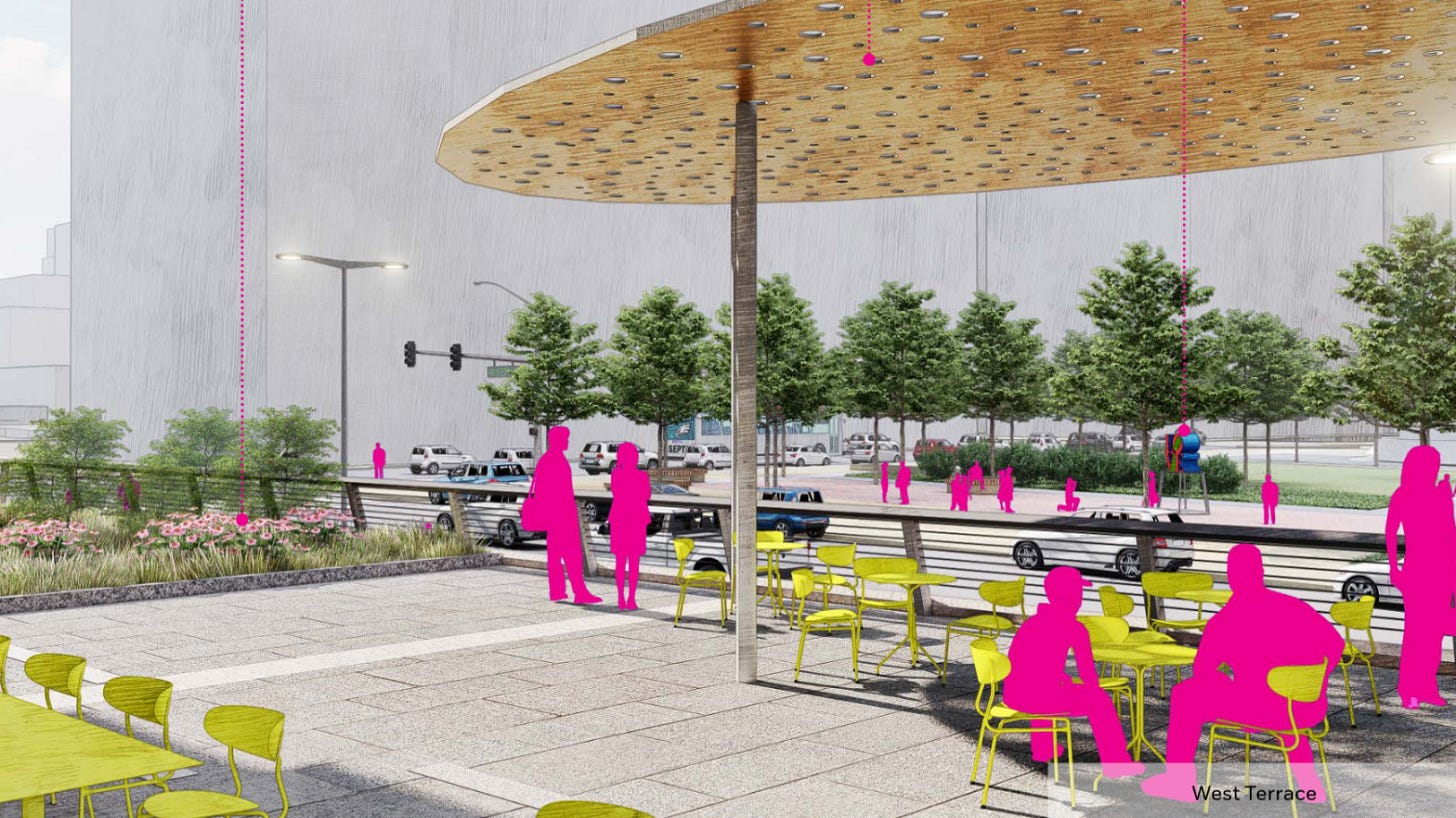Let's Reconsider Moveable Chairs in Public Space
How to Get Public Space Out of Its Design Rut
A few weeks ago I was in New York, walking from Penn Station to Union Square along Broadway. This stretch of Broadway has undergone a major transformation over the past decade: once a traditional swath of bustling Broadway, it’s now a kind of woonerf with bike lanes, sidewalk cafes, and a little space for cars to pass through slowly.
This is a much more healthy, vibrant use of space than just cars, and converting roadway to pedestrian uses is a difficult and brave thing for the city to do. But I couldn’t help feel the same creeping disappointment that I feel in a lot of newly created public plazas where there isn’t the money, the permanence, or the mindset to create great landscape design.
We rely heavily on moveable chairs and the people in them to do the work of enlivening public space. Sometimes the public space succeeds — for example, in Bryant Park, which perhaps deserves credit for popularizing the moveable metal chair in American parks and plazas — but increasingly, when I see moveable chairs in a public space I feel like it’s a cop out.
Bryant Park offers a lot for the senses: architectural vistas, grass you can lace your fingers through, the crushed gravel underfoot, established trees on the perimeter. The chairs simply try to not detract from the park’s assets.
By contrast, up and down Broadway — and in countless public parks across the country now — moveable chairs are the design. They add all the color, they’re the sole amenity, they offer sitting as the primary activity. And as a result their lightweight, flexible nature can in many settings start to feel aimless, almost offensively inoffensive.
We have many parks in Philadelphia littered with moveable chairs, so I was not surprised when the city announced a new design for the plaza surrounding the Municipal Services Building— the place where you go if you need help with filing your small business’s tax return — and found bright moveable chairs in the renderings. The bland design is relying on these powder-coated seats to suggest the space is hip, flexible, casual. But my cynicism grew angrier when I realized the proposed public space’s design makes no overture to the adjacent bus stop at 15th and JFK — where no less than 11 bus lines pick up passengers. I couldn’t find anything about the fact that the plaza also sits above Hub of Hope, a homelessness support center, either.
Like so many public spaces these days, there’s no connection between form and function here. Ironically, it’s placemaking that starts to feel placeless. The strip of Broadway mentioned above has been turned into an outdoor food hall, extensions of cafes that displaced the flower and fashion industries that thrived in the neighborhood throughout the 20th century until gentrification pushed them out. Wouldn’t it have been more interesting and meaningful to return some space to small flower and fashion vendors?
Cities have done a good job with the “lighter, quicker, cheaper” ethos of placemaking – and our thanks are due to many organizations that have pushed cities to realize that we can quickly and effectively improve upon paved parking lots and plazas with not much more than some cans of paint and moveable metal chairs.
Indeed, it’s because of this movement of placemakers that we have developed a culture of caring about public space in many American cities, and New York has appointed a Chief Public Realm Officer. But we have so focused on the low cost of modestly improving spaces that we have failed to think about the opportunity cost of not more fully developing them.
Past the paywall I’ll continue this argument, explaining:
why we should “ban” moveable chairs and why that might be a productive constraint
the downsides of temporary public space designs
cities leading the way with innovative public spaces that go way beyond moveable chairs








